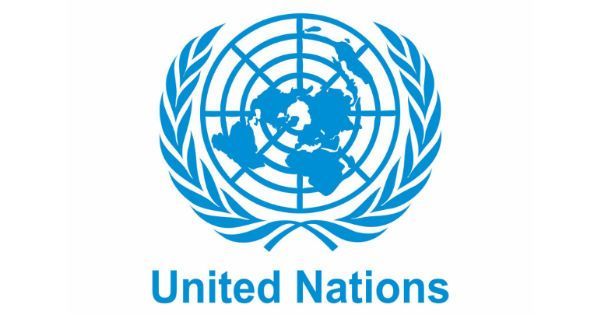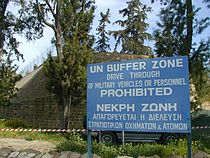
Objectives
Peacekeeping and security
Main articles: United Nations peacekeeping and List of United Nations peacekeeping missions
Bolivian “Blue Helmet” at an exercise in Chile, 2002
The UN, after approval by the Security Council, sends peacekeepers to regions where armed conflict has recently ceased or paused to enforce the terms of peace agreements and to discourage combatants from resuming hostilities. Since the UN does not maintain its own military, peacekeeping forces are voluntarily provided by member states. These soldiers are sometimes nicknamed “Blue Helmets” for their distinctive gear. The peacekeeping force as a whole received the Nobel Peace Prize in 1988.
In September 2013, the UN had peacekeeping soldiers deployed on 15 missions. The largest was the United Nations Organization Stabilization Mission in the Democratic Republic of the Congo (MONUSCO), which included 20,688 uniformed personnel. The smallest, United Nations Military Observer Group in India and Pakistan (UNMOGIP), included 42 uniformed personnel responsible for monitoring the ceasefire in Jammu and Kashmir. UN peacekeepers with the United Nations Truce Supervision Organization (UNTSO) have been stationed in the Middle East since 1948, the longest-running active peacekeeping mission.
A study by the RAND Corporation in 2005 found the UN to be successful in two out of three peacekeeping efforts. It compared efforts at nation-building by the UN to those of the United States, and found that seven out of eight UN cases are at peace, as compared with four out of eight US cases at peace. Also in 2005, the Human Security Report documented a decline in the number of wars, genocides, and human rights abuses since the end of the Cold War, and presented evidence, albeit circumstantial, that international activism—mostly spearheaded by the UN—has been the main cause of the decline in armed conflict in that period. Situations in which the UN has not only acted to keep the peace but also intervened include the Korean War (1950–53) and the authorization of intervention in Iraq after the Gulf War (1990–91).[128]

The UN Buffer Zone in Cyprus was established in 1974 following the Turkish invasion of Cyprus.
The UN has also drawn criticism for perceived failures. In many cases, member states have shown reluctance to achieve or enforce Security Council resolutions. Disagreements in the Security Council about military action and intervention are seen as having failed to prevent the Bangladesh genocide in 1971, the Cambodian genocide in the 1970s,[130] and the Rwandan genocide in 1994.[131] Similarly, UN inaction is blamed for failing to either prevent the Srebrenica massacre in 1995 or complete the peacekeeping operations in 1992–93 during the Somali Civil War UN peacekeepers have also been accused of child rape, soliciting prostitutes, and sexual abuse during various peacekeeping missions in the Democratic Republic of the Congo, Haiti, Liberia, Sudan and what is now South Sudan, Burundi, and Ivory Coast.[137] Scientists cited UN peacekeepers from Nepal as the likely source of the 2010–13 Haiti cholera outbreak, which killed more than 8,000 Haitians following the 2010 Haiti earthquake.
In addition to peacekeeping, the UN is also active in encouraging disarmament. Regulation of armaments was included in the writing of the UN Charter in 1945 and was envisioned as a way of limiting the use of human and economic resources for their creation.[95] The advent of nuclear weapons came only weeks after the signing of the charter, resulting in the first resolution of the first General Assembly meeting calling for specific proposals for “the elimination from national armaments of atomic weapons and of all other major weapons adaptable to mass destruction”.
The UN has been involved with arms-limitation treaties, such as the Outer Space Treaty (1967), the Treaty on the Non-Proliferation of Nuclear Weapons (1968), the Seabed Arms Control Treaty (1971), the Biological Weapons Convention (1972), the Chemical Weapons Convention (1992), and the Ottawa Treaty (1997), which prohibits landmines.[140] Three UN bodies oversee arms proliferation issues: the International Atomic Energy Agency, the Organisation for the Prohibition of Chemical Weapons, and the Comprehensive Nuclear-Test-Ban Treaty Organization Preparatory Commission.[141]
